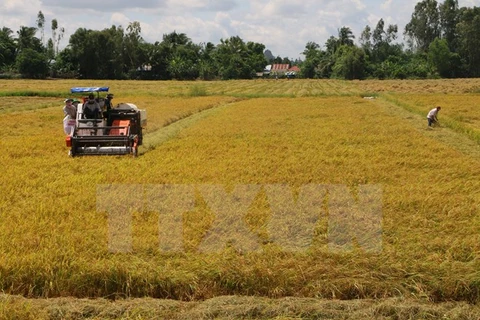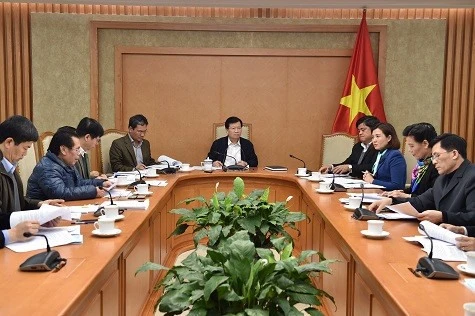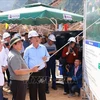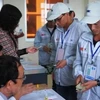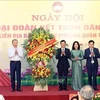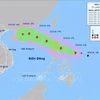 Students at Dao Vien Primary School in Yen Son District of the northern mountainous province of Tuyen Quang take part in a morning exercise session. (Photo:VNA)
Students at Dao Vien Primary School in Yen Son District of the northern mountainous province of Tuyen Quang take part in a morning exercise session. (Photo:VNA) Hanoi (VNA) - Prime Minister Nguyen Xuan Phuc has issued a National Action Programme on Zero Hunger, aiming to ensure enough food and nutrition for all citizens.
The programme is part of the United Nations Sustainable Development Goal No 2 which focuses on sustainable solutions to eradicate hunger in all its forms by 2030 and to achieve food security.
The programme prioritises the reduction of malnutrition among children under two by 2025.
More specifically, a target has been set to reduce the ratio of children under two who are a low height for their age (stunted) to less than 20 percent across most of the country, and 25 percent for children in mountainous areas in the northern and Central Highland regions.
The target for children under two who are a low weight for their height or a low weight for their age has been set at below 5 percent.
Social policies to support pregnant women and provide children with adequate nutrition are also included in the programme.
Under the National Action Programme on Zero Hunger, to develop a sustainable food system, farmers should become members of co-operatives and production chains to allow small-scale farming households to enjoy increased productivity and incomes and avoid waste through the use of new technologies.
Improving natural disaster forecasting and warnings is also one of the targets.
Funding will be sourced from the national programme on poverty reduction, and is expected to cost over 545 billion VND (23.7 million USD), including nearly 34 billion VND (1.5 million USD) for the first phase from 2018-20, and over 511 billion VND (22.2 million USD) for the second phase from 2021-25.
According to the Ministry of Agriculture and Rural Development, Vietnam’s poverty rate fell from 46.9 percent in 1990-92 to 9 percent in 2010-12.
The number of poor households nationwide had fallen to 7 percent at the end of 2017, according to the Ministry of Labour, Invalids and Social Affairs.
According to the Food and Agriculture Organisation, Vietnam had achieved the first phase of Sustainable Development Goal No 2 by cutting its poverty rate by half in 2015, and looking to address poverty as a whole by 2020.
However, malnutrition remains a big problem, especially in rural and mountainous areas.
The Zero Hunger Challenge was launched by United Nations Secretary-General Ban Ki-moon in 2012. The Zero Hunger vision reflects five elements from within the sustainable development goals, which taken together, can end hunger, eliminate all forms of malnutrition, and build inclusive and sustainable food systems. -VNA
